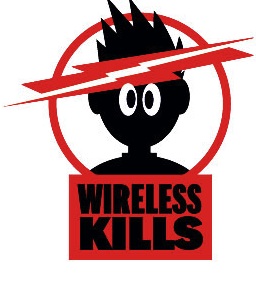Category: wireless
Is the public appropriately protected by the FCC RF exposure guidelines?
Last minute reminder: FCC Comments due on Tuesday!
 The Federal Communications Commission (FCC) is seeking comments on whether its radiofrequency radiation (RF, wireless) exposure guidelines should be “more restrictive, less restrictive or remain the same”.
The Federal Communications Commission (FCC) is seeking comments on whether its radiofrequency radiation (RF, wireless) exposure guidelines should be “more restrictive, less restrictive or remain the same”.
These comments are due Tuesday September 3.
The FCC request for public comments is in part a response to the US Government Accountability Office (GAO) who called for a current review.
The FCC has not updated its RF exposure guidelines since 1996. Meanwhile there has been an explosion of wireless devices in homes across America, and forced deployment (cell towers, smart meters) of RF radiation on the general population.
The FCC exposure guidelines are based on thermal harm from 5 and 30 minute RF exposure. The wireless industry routinely uses the FCC exposure guidelines as proof of safety.
A stated goal of the FCC in requesting public comments includes “…the Commission’s intent is to appropriately protect the public without imposing an undue burden on the industry…”
What do you think? Is the public appropriately protected by the FCC exposure guidelines?
The last day to post Comments is Tuesday September 3, 2013. Comments for this proceeding are closed. Read formal Comments in docket 13-84 filed by EMF Safety Network
Planet Radiation: Interview with Eileen O’Connor
 Eileen O’Connor is the Director for the Radiation Research Trust (RRT), Founder board member for the International EMF Alliance, Stakeholder for the EU Commission Dialogue Group and Member of the UK Health Protection Agency, EMF Discussion Group.
Eileen O’Connor is the Director for the Radiation Research Trust (RRT), Founder board member for the International EMF Alliance, Stakeholder for the EU Commission Dialogue Group and Member of the UK Health Protection Agency, EMF Discussion Group.
Eileen is interviewed by Rev. Alison Levesely of Divine Conversations on UnTangled FM. “This conversation will be challenging and a no holds barred frank conversation about the radiation we are living with on our planet. What are the options open to you and what can you do about this invisible nightmare that is causing untold damage?”
Dr. Ronald Powell: “Smart Meters are a community concern”
Dr. Ronald M Powell, PhD in applied physics from Harvard wrote: Biological Effects from RF Radiation at Low-Intensity Exposure, based on the BioInitiative 2012 Report, and the Implications for Smart Meters and Smart Appliances
This is an important document to read and to bring to policy makers.
Dr. Powell’s Biological Effects Chart was produced from a review of the medical research literature on the biological effects of electromagnetic fields (BioInitiative.org). He concludes the following five points:
- The current FCC Maximum Permitted Exposure (MPE) limits are so high that they provide no protection for the public from the biological effects found in any of the 67 studies.
- New biologically based RF exposure limits proposed in the BioInitiative 2012 Report are 1 million times lower than current FCC limits and would protect against the biological effects found in nearly all of the 67 studies.
- A single Smart Meter on a home can produce RF exposure levels that caused the biological effects found in either most or many of the 67 studies, depending on the distance from the Smart Meter.
- A single Smart Appliance in the home can produce RF exposure levels that caused the biological effects found in nearly half or fewer of the 67 studies, depending on the distance from the Smart Appliance. Multiple Smart Appliances in a home multiply the total exposure.
- A single Smart Meter on a nearest neighbor’s home can produce RF exposure levels that caused the biological effects found in many of the 67 studies. A given home may have one to eight nearest neighbors, each with a Smart Meter, multiplying the total exposure in the given home.
“Smart Meters are a community concern, not just an individual concern.”-Ronald Powell, PhD Applied Physics
The section on neighbors meters, and how smart meters are a community concern is especially relevant as policy makers decide how to proceed with solutions. Here’s an excerpt of his paper:
“A Single Smart Meter on a Neighbor’s Home Can Produce RF Power Density Levels Shown to Cause Biological Effects
For some locations in a given home, the distance to a neighbor’s Smart Meter may be less than the distance to the resident’s own Smart Meter. Thus, a neighbor’s Smart Meter may be the principal source of radiation for some locations in the given home. The Biological Effects Chart shows that a single Smart Meter can produce RF power densities found to cause biological effects even at distances greater than 20 meters, and certainly up to 100 meters. And the number of neighbors within that range can be large. A given single-‐family home in a residential community may have one to eight nearest neighbors, and even more next nearest neighbors, all within 100 meters (328 feet) of a given home, and each with a Smart Meter.
The problem of exposure from the neighbors’ Smart Meters becomes more serious as the distances between adjacent homes, and thus the distances between adjacent Smart Meters, get smaller. So, generally speaking, residents of townhouses will receive more radiation from their neighbors’ Smart Meters than residents of single-‐family homes. And residents of apartments will receive even more radiation from their neighbors’ Smart Meters, depending on the location of the Smart Meters in the apartment buildings.
So Smart Meters are a community concern, not just an individual concern. To resolve the problems of RF exposure for a given home, it will be necessary to address all of the Smart Meters near that home. Smart Appliances, too, contribute to this concern. While, individually, they have a lower RF power output than a Smart Meter, the Smart Appliances of neighbors can also increase the RF exposure in the given home.
Fortunately, some states have offered an individual OPT OUT from the installation of a Smart Meter. While such an OPT OUT is very helpful, and is definitely the vital first step, the data on biological effects discussed here suggest the limitations of such an OPT OUT in resolving the problem of excess radiation from Smart Meters. There is no substitute for a roll back of all Smart Meters at the community level, or higher.”
“There is no substitute for a roll back of all Smart Meters at the community level, or higher.”-Ronald Powell, PhD Applied Physics
Reduce radiation risk from wi-fi, cell phones, and ipads
The Australian Radiation Protection and Nuclear Safety Agency (ARPANSA) published a Fact Sheet on how to reduce exposure to wireless radiation devices.
This video by Wifi in Schools Australia reviews ARPANSA’s advice, explains SAR values, tests iPads vs. iPhones, and tells how to reduce exposure from mobile and other wireless devices.
Dirty electricity, electromagnetic pollution and disease
Dr. Sam Milham. author of “Dirty Electricity”.
Canadian Health Authority warns about cell phone/ fertility risks
 The BC Centre for Disease Control (BC CDC) recommends that men keep cell phones out of their pants pocket and limit mobile phone use. The report confirms that there is consistent evidence that exposure to testes is associated with reduced sperm count, motility, concentration and altered cell structure.
The BC Centre for Disease Control (BC CDC) recommends that men keep cell phones out of their pants pocket and limit mobile phone use. The report confirms that there is consistent evidence that exposure to testes is associated with reduced sperm count, motility, concentration and altered cell structure.
In its report, Radiofrequency Toolkit for Environmental Health Practitioners, the BC CDC states that “the epidemiological studies of men assessed for infertility were consistent in demonstrating decreased sperm motility associated with increased use of mobile phones”.
In the need to understand how harm is caused by exposure to radiofrequency radiation (RF), the review panel noted that “oxidative stress seems one of the more plausible mechanisms of RF-induced sperm damage.”
While the BC CDC report downplays scientific connections between wireless and health, for example cell phones and head tumors, they do offer strategies for “minimizing personal exposure to RF”, including “replacing wireless RF devices, such as phones with hard wired”.
Radiation Research Trust launched a campaign to warn about cell phone fertility risks: Save the Male- Your Future is in Your Hands. They write, “Research has shown a consistent link between mobile phone exposure and adverse health effects on male fertility and sperm viability.”
Wireless Kills!
 Utility smart meters, wi-fi, cell and cordless phones, and other common devices emit wireless radiation. The World Health Organization has classified wireless radiation as a 2B carcinogen, same as DDT and lead, based on studies linking wireless to brain tumors.
Utility smart meters, wi-fi, cell and cordless phones, and other common devices emit wireless radiation. The World Health Organization has classified wireless radiation as a 2B carcinogen, same as DDT and lead, based on studies linking wireless to brain tumors.
Wireless can also cause headaches, tinnitus, anxiety, insomnia, cognitive and heart problems, and more. Children are especially at risk.
The BioInitiative Report is a compilation of evidence by international doctors and scientists who evaluated thousands of studies. They warn about cancer and other health risks from wireless technology and recognize children are especially at risk, because their brains absorb more radiation than adults.
Click on the following links for more reasons to take precautions to protect yourself and your family.
- Use cell phones for emergencies and replace cordless with corded phones
- Use a wired internet router (see section on wi-fi)
- Restore the analog utility meters
If you have developed symptoms of electrical sensitivity (ES) learn how to reduce your overall exposure. See videos and learn more about ES.
The “wireless kills” card can be downloaded and printed out. http://emfsafetynetwork.org/wp-content/uploads/2013/07/Wireless-kills.pdf
Thanks to Zavier Cabarga for logo and card design.